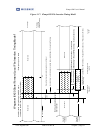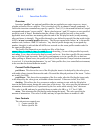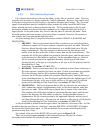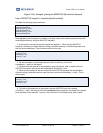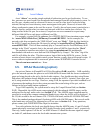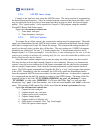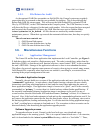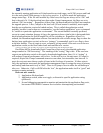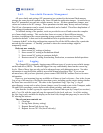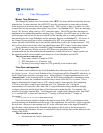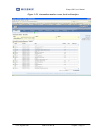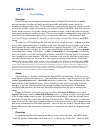
iPump 6420 User’s Manual
www.wegener.com 800070-01 Rev B Chapter 3, Page 90
3.6.2. Non-volatile Parameter Management
All non-volatile unit settings (NV parameters) are retained in the internal flash memory
storage, the same physical location as the Linux OS and the application images. At unit boot-up,
these NV parameters are read into volatile memory for use. As these parameters changes, new
values are written to the NV storage. These parameters include many factory and user settings.
The full set of parameters can be stored, downloaded, and re-loaded. This allows duplication of
unit settings in production and service.
To facilitate testing of the product, tools are provided to save off and restore the complete
set of non-volatile settings. This can be done from or two any of three different storage
locations, in addition to the current operating storage position (so there are four total). The
“production default” is that used to do standardized tests in production and service. The
“customer default” is the ship configuration requested for all the i6420s ordered for a particular
network by the customer. A “backup” position is where the current settings might be
temporarily stored.
Relevant user controls:
1. Store current NV settings to backup
2. Store current NV setting as Production default
3. Store current NV setting as customer default
4. Restore current NV setting from backup, Production, or customer default positions
3.6.3. Logging
The iPump6420 is constantly logging many different types of events to non-volatile storage
on the hard-drive (HDD). The amount logged can vary considerably based on the current log
levels. Most of these logs are only useful to advanced users with debugging access. No other
information is supplied in this publicly-accessible Manual about these logs. If you are an
advanced user, and you have questions, please contact WEGENER Customer Service for more
information.
However, two important logs are available at all times to local web users. One is the As-run
Log, a log of all temporary file/playlist insertion events, including results entries stating whether
the insert was successful or not. The other is the Operational Log (“Ops Log”), a log of
miscellaneous events such as relay closure changes, error’d second events in the Transport, audio
file and OAR recordings, carrier and/or audio stream switches, and other events.
Note that the As-run Log may be requested as a Return Path report by Compel (see section ),
and a *.csv file with the same info may be requested by the local web user. As of this writing,
the Ops Log is only available for display on the local web, though that page may be saved to the
PC running the browser.
The relevant user controls are:
1. Clear logs
2. Set log limits (factory setting)
3. Request Return Path As-run Log
4. Request As-run CSV file (local web only)



